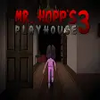Abandon all hope
Abandon all hope
Vote: (3 votes)
Program license: Paid
Works under: Windows
Vote:
Program license
(3 votes)
Paid
Works under:
Windows
Interactive horror games come in numerous shapes and sizes, each offering distinct experiences that test the player's decision-making and nerve. In the realm of narrative-driven horror, "The Dark Pictures Anthology: Little Hope" stands out as a chilling journey into a town plagued by its dark past. Developed by Supermassive Games and distributed by Bandai Namco Entertainment, Little Hope is the second installment in the enthralling Dark Pictures Anthology series.
Haunting Tale Rooted in Historical Horror
Little Hope weaves a story that draws heavily from historical horror and supernatural themes. Players find themselves accompanying a group of four college students and their professor, who, after a bus accident, are stranded in the eerie town of Little Hope, reminiscent of Silent Hill or the unsettling settings found in classic literature such as Arthur Miller's "The Crucible." It's a harrowing setup that promises to delve deep into the human psyche, confronting fears of witchcraft and the unknown.
The narrative kicks off with a flashback to the 1970s, establishing a troubled family whose fate is violently sealed in a house fire with mysterious origins. Interestingly, the modern-day protagonists bear striking resemblances to the family members, setting the stage for a multi-layered story that spans different time periods.
A Gameplay of Choices and Consequences
Little Hope’s core gameplay centers on making choices that influence the fate of the characters. With dialogue decisions guided by a compass needle pointing to spoken options, every choice echoes through the relationships between characters, their means of escape, and their chances of survival.
Admittedly, this structure can be a double-edged sword. The game's ambition to portray characters within multiple time frames can hinder the depth and relatability of the cast. The time-hopping aspect, while intriguing, occasionally obstructs the title’s ability to cultivate truly three-dimensional personalities. This might leave players pondering who exactly these characters are, despite spending hours guiding their every move.
Atmospheric Visuals and Sound Design
Little Hope excels in crafting an immersive atmosphere through its visuals and audio. The game’s setting is rich with haunting iconography that draws inspiration from films such as "The Blair Witch Project" and "The Witch." Misty landscapes and dark, foreboding forests are rendered beautifully, amplifying the sense of isolation and dread that permeates the experience.
Similarly, the game's sound design is exceptional, weaving a tense and unnerving ambiance that pulls players deeper into the Little Hope's chilling narrative. The sound effects and music work in concert with the visuals to keep the player on edge, displaying a technical proficiency that is commendable.
Ending That May Divide Opinion
While Little Hope offers a modern twist to cinematic adventure games and is steeped in compelling horror lore, there is a caveat: the ending. Without revealing too much, the conclusion has proven polarizing among players. What is meant to provide a climactic crescendo can come off as frustrating and potentially anticlimactic to those invested in steering their characters through the ominous fog.
Pros
- Engaging narrative with historical horror elements
- Choice-driven gameplay affecting outcomes
- Strikingly atmospheric visuals and audio design
- Thematic depth with references to classic horror sources
Cons
- Time-jumping narrative can impede character development
- The ending may be unsatisfying for some players
- Some may find the pace slower due to the emphasis on story over action
In conclusion, "The Dark Pictures Anthology: Little Hope" offers a haunting exploration of horror that will intrigue and terrify. Despite its narrative ambitions sometimes overshadowing character depth, it is a journey that is well worth embarking upon for fans of the genre, even if the destination may prove divisive.




